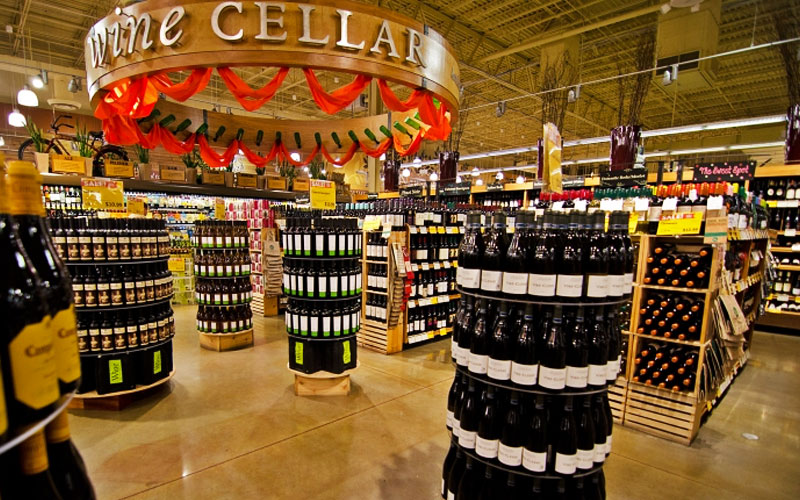United States wine consumers are ready to buck the establishment. Power in the wine world is shifting away from scores, critics and renowned winemaking regions. Instead, consumers are turning to more obscure, native grapes and New World wineries that offer value over prestige.
Blame the hipster sommelier, too many voices writing about wine, millennials or innovative marketing. Blame whatever comes to mind first. But it’s undeniable that consumers have a seemingly endless number of options they didn’t have before — and the overwhelming majority of those options aren’t coming from Napa or a high-priced chateau.
“There’s more questioning of the establishment than there’s ever been, and that is one of the most invigorating things for me,” Devon Broglie, a Master Sommelier and the global beverage buyer for Whole Foods, tells VinePair. “Now more than ever there is no right or wrong. No person said ‘this is great therefore it must be.’”
The score hasn’t disappeared. It’s a selling tool and part of the dialogue. It’s just that people are now just as likely to heed suggestions from friends, social media or a trusted wine nerd. Even wine couldn’t escape the impact of media fragmentation and Silicon Valley disruption.
“At the time that [Robert] Parker was scoring wines, it was at the beginning,” Broglie says. “The idea of the critic and the wine score was pure because the institution was the negociant and the wine-sales establishment. Now what we’re seeing is that the critic and the score has become the establishment.”
Welcome to the new world of wine. Tastes are varied, grapes are harder to pronounce and trends can switch on a dime.
Enter wines from South America. In 2003, The New York Times reviewed Cabernet Sauvignon, Merlot, Malbec and a Pinot Noir from Argentina and Chile. Eric Asimov, the Gray Lady’s wine critic, said they were “well-made wines with not a lot of idiosyncrasy.” Amanda Hesser, former food editor of The New York Times Magazine and cofounder of Food52, said they were “perfectly O.K. wines with not a lot of personality.”
Thirteen years later, Whole Foods — not exactly your neighborhood specialty wine store — is featuring distinctive wines from Chile.
“We hand selected nine wines from eight different regions,” Broglie said. “They’re not the biggest players in the field, they’re smaller producers. We deliberately chose Chile because it’s a country that is getting better. There are grape varieties that customers are familiar with, and then there are discoveries with grapes that are unique in the sense of Carménère.”
In the end, no matter what Broglie thinks tastes good, Whole Foods has to appeal to a national palate. It can bring in wines that were once considered offbeat and more fit for smaller specialty wine stores — establishments that Whole Foods doesn’t have the best relationship with in wine cities like New York. Wine drinkers are attracted to things they haven’t tried before more than ever, and Whole Foods is appealing to the newer wine drinkers who aren’t as tied to the cache of a grand cru.
Once unknown regions aren’t proof enough of change? Take a look at canned wine. If Broglie is any authority — remember that he guides all wine choices for the eighth-largest food and drug store company in the country — canned wine is where it’s at right now.
All trend signs are pointing toward the rise of drinking wine from a pop-top container. It’s been a long time coming, too, although Broglie admits we’re still in the early adoptive phase. The LA Times dates the first canned wine to 1996 with Barokes Wines in Australia. Now, consumers who want to crush a can of wine on the beach have (a little) more variety with labels like Underwood, Union Wine Co. and Infinite Monkey Theorum gracing the aluminum.
“We work with a company called West Side Wine Co. that makes a Cabernet Sauvignon and a Chardonnay for us that are solid examples of California Cab and Chardonnay that just happen to come in a 250-milliliter can,” Broglie says.

Living a Champagne life on a beer budget doesn’t have to be as restrictive as it used to.
“Our peak on the bell curve is that $15 to $25 price range,” Broglie says. “That for us is where we believe that the best value exists for the money where you have wine from a grape that speaks of the place and that is made by a real person.”
High-acid, low-alcohol and balanced wines sit on shelves right next to oak-bomb Chardonnay. Wines under $30 have $60 flavor. Consumers are scanning the shelves with their phones to get instant, crowd-sourced reviews about the entire ethos of the wine producer.
“There’s a conversation, a dialogue about [what’s good] and people on both sides of the aisle vehemently disagree what is quality and what constitutes quality and what is exciting in wine right now,” Broglie says. In his opinion, though, what’s most exciting is clear as day: “This idea that great wine can and is being made everywhere in the world and it’s being made by passionate and dedicated wine makers.”
Raise a glass high to finding something new. Whether it’s a new grape variety, a new region or wine in a can, there’s something for just about everyone these days no matter your budget. All you have to do is go out and start tasting.

